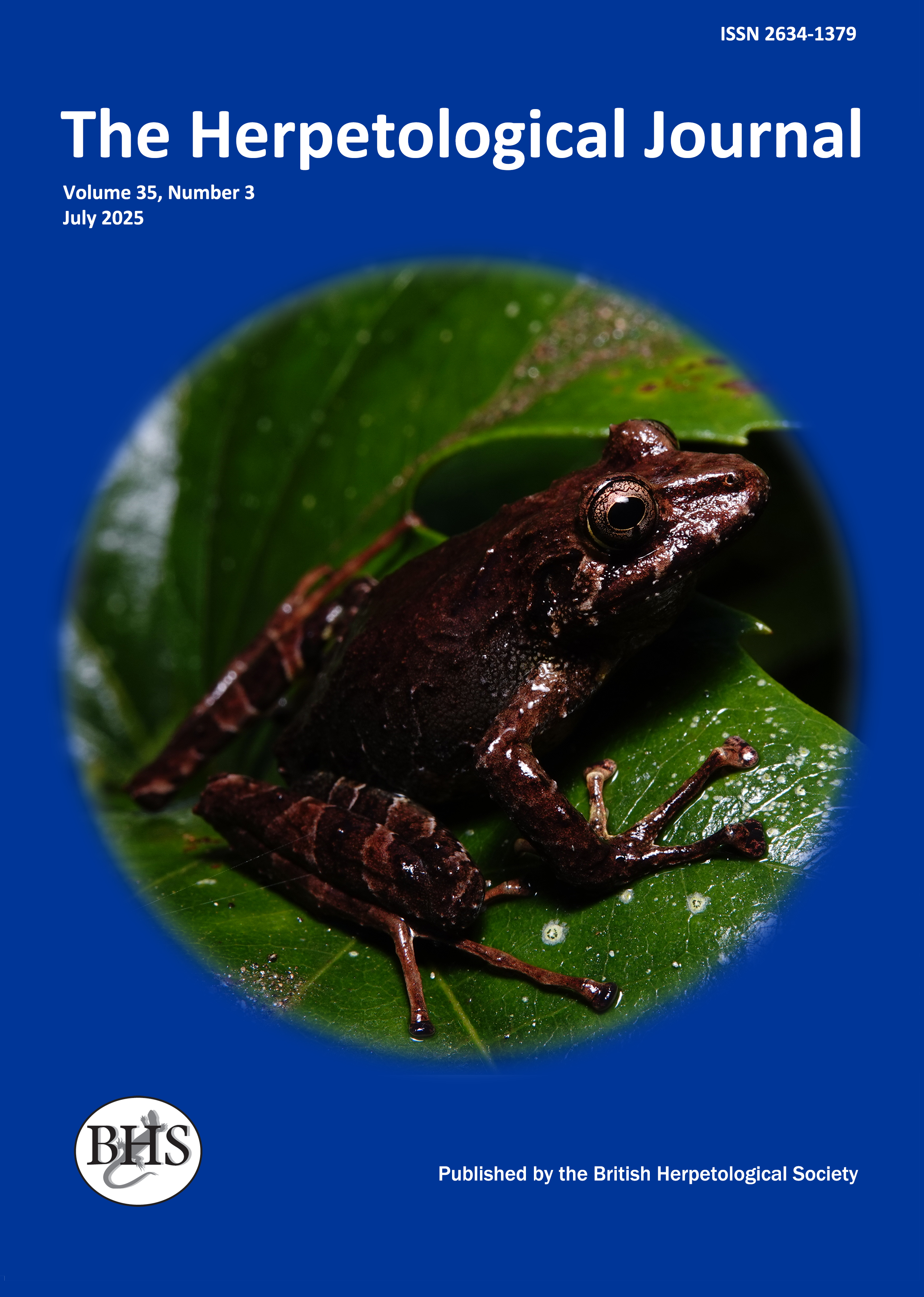
The Herpetological Journal
The Herpetological Journal is the Society's prestigious quarterly scientific journal. Articles are listed in Biological Abstracts, Current Awareness in Biological Sciences,Current Contents, Science Citation Index, and Zoological Record.
ISSN 0268-0130
2021 Impact Factor from Clarivate for the Herpetological Journal is 1.194, an increase of 0.332 from 2020.
pdf 03. Comparative ecology of three species of Thamnodynastes (Serpentes, Dipsadidae) in subtropical-temperate South America
1107 downloads
Open Access
pp. 87-96
Authors: Bellini, Gisela P.; Giraudo, Alejandro R. & Arzamendia, Vanesa
Abstract: Two hypotheses have been proposed to explain the differences among species within present-day communities: the competition-predation hypothesis (CPH) and the deep history hypothesis (DHH). However, the lack of information about the ecology of many species hinders clarification of the role of these different, though not mutually exclusive, hypotheses. We compared ecological data of three species of snakes (genus Thamnodynastes) in their subtropical-temperate geographical distributions, evaluating the reproductive biology, sexual dimorphism, feeding ecology and habitat use of T. hypoconia and T. strigatus, and providing the first ecological data of T. chaquensis. Females attained sexual maturity at larger sizes than males. Unusually for viviparous snakes, males and females had similar body sizes although males had more ventral scales than females. The reproductive cycle of females was seasonal (not annual), with parturition occurring in summer. Males of T. chaquensis and T. strigatus were characterised by continuous reproductive cycles, while males of T. hypoconia showed differences between seasons. All three species mainly fed on amphibians. Thamnodynastes strigatus also fed on fishes, lizards and mammals, T. hypoconia occasionally fed on lizards, while T. chaquensis was an amphibian specialist. Thamnodynastes hypoconia lived in lentic aquatic habitats, T. strigatus was the most aquatic species, and T. chaquensis was the most terrestrial species. We propose that most of the ecological traits examined are phylogenetically conservative within the Tachymenini, supporting the DHH.
Keywords: FEEDING ECOLOGY, NICHE OVERLAP, COMPETITION-PREDATION HYPOTHESIS, HABITAT USE, TACHYMENINI, REPRODUCTION ECOLOGY, DEEP HISTORY HYPOTHESIS

